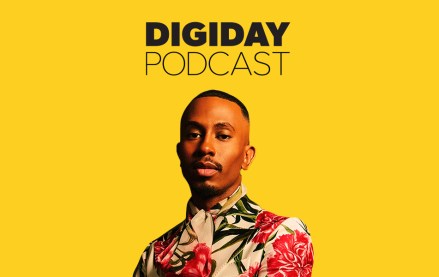Join us Dec. 1-3 in New Orleans for the Digiday Programmatic Marketing Summit

Aki Spicer is director of digital strategy at TBWA\Chiat\Day NY.
I have covered two million square feet of exhibit space showcasing 52,326 exhibitors that hawked over 20,000 new products. I have survived and here is what I learned:
It’s a platform world.
It was clear that this is the year when key brands took the lead as their category “platforms.” Nest pulled ahead to become more than a thermostat device to being the platform hub of all your connected home. Fitbit is pulling away from being a tracker device to being the leading fitness hub that all other products want desperately to “work together with”. A few brands like Samsung are proving able to be the platform hubs for their category (multi-categories, too), which then relegates the rest to playing very good support players on the consumers’ team of tech solutions.
Takeaway: We will see less of the land grab to be “everything-for-all-ailments” in health technology, for instance. Instead, we’ll see granular feature focus — “I’m the best Glucose monitor and I work well with Fitbit and platforms you already have” — products and brands are honing in on their feature superpower. And they are trumpeting their role to you as the complementary component to your ecosystem of already-existing solutions. Consumers have been looking for a clear “lead” to offer clarity so they can stop testing products and start benefiting and improving with their expanding tech kits. For example, FitBug is attempting to move from “another tracking bracelet” toward making sense of all your Nike+ and Fitbit and Withings data to construct a personalized wellness plan. This is a smart approach for the fledgling devices who haven’t managed to become a platform. Work together or die.
Creative production keeps getting cheaper.
Sure, agencies still have some of those epic commercial productions and big honking digital apps and site experiences, but we have more and more daily “prosumer”-quality media production than ever before. That’s not going to change anytime soon. Now the Lenovo Vibe Xtension Selfie Flash wants to bring that kind of gloss to your iPhone camera kit. AirDog Drone wants to be your aerial cam for the selfie era. Panono offers instant epic panoramics for the people.
Takeaway: A social community manager and creative team can now add awesome epic gloss to their run-and-gun YouTube documentaries and event coverage. We can get a “helicopter aerial” on a prosumer budget.This will fuel a creative renaissance for our ideas. And this will raise the sophistication of social content. Clients will win. Agency creatives and producers will jump into this rich pool of DIY production capability. Or die.
Data overload is real.
Too much of anything is a bad thing. There’s too much stuff that generates lots of data but not enough things that actually make sense of all this data. We cracked the core functionalities. We can measure and track just about anything, cheaply and reliably. We can pipe and channel all the shows and apps into one TV, into one handset. We can bring all the driving experience into one dashboard. Now what does it all mean? Consumers don’t need another squiggly line of measurement data. They just want to drive better and safer. They want to feel better and fit. They want to enjoy the entertainment they like without having to work so hard hunting and gathering. Consumer technology still costs a lot and then makes people work hard to make sense of it all.
Takeaway: A wealth of industries now need to get off the sidelines and start to get “into” consumer tech and substantively tap this wealth of consumer data that is oozing from us all and use it to make their brand experiences better. Netflix is the only entertainment platform that is doing something with its data. That is conducting actionable insights, not just generating more nodes of data. And I’m not really seeing enough of that kind of consultative coaching out of all the consumer tech data that is exploding around and out of us. This is a real miss on the CES floor. But its also an opportunity I hope to see at CES 2016.
Cover image via Shutterstock
More in Marketing

Confessions of a crypto strategy exec who wants to spend ad money on X, but can’t
When not even the bigger spenders on X can give their ad dollars to the platform, that’s a concern.

Ad tech’s economy depends on float — and it’s getting pricier to keep it moving
The crunch has created an opening for a small set of financiers built specifically for ad tech’s quirks.

How Kalen Allen navigates brand safety and cultural polarization in the creator economy
As the line between politics and culture becomes more blurred, creators and influencers more often find themselves caught in the crosshairs.





